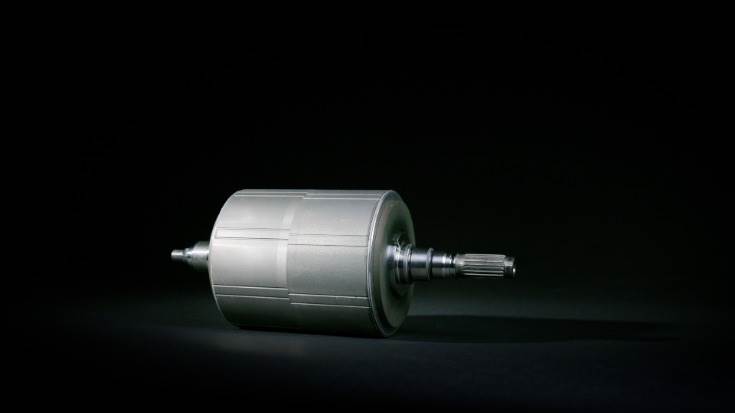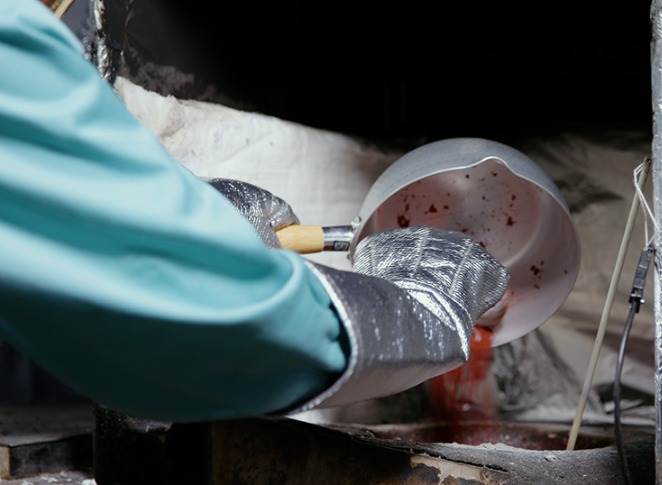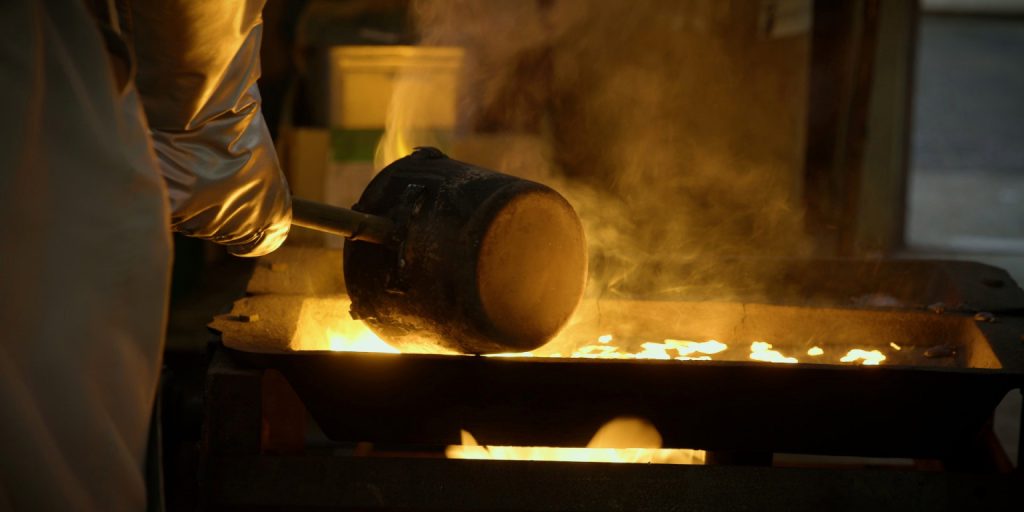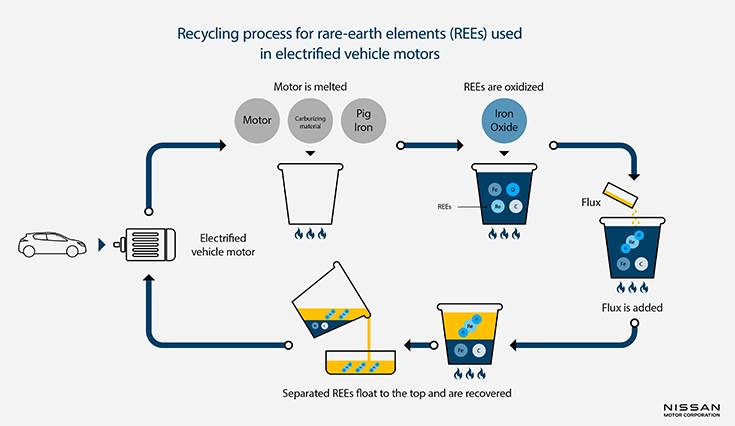As governments strive to reduce their carbon emissions, the emphasis is shifting on cleaning up fossil-fuel-powered transportation. Electric vehicles (EVs) are an important component of this approach, but their manufacture necessitates the extraction of rare earth elements (REEs).
Nissan Motor Co. Ltd. has developed a new technology to cut down the cost of recycling rare earths used in magnet motors for electric vehicles (EVs), the company said on Friday.

In collaboration with Katsunori Yamaguchi, a professor at Waseda University, Nissan developed a novel recycling process to recover rare earth compounds efficiently without disassembling the motor, as is the usual method.
Electric motors — using rare earths such as neodymium and dysprosium — naturally have a magnetic force. With the new technology, Nissan melts the rotors into a furnace at 1.400 degrees Celsius using a dry refinery technique, extract them as an oxide liquid and then split them into rare soils to extract rare earths.

According to Kazuhiro Ogawa, senior manager at Nissan, the new technology will reduce processing time from eight hours to four hours and cut recycling costs in half.
“Reducing the use of rare earths is a key challenge as the resources are unevenly distributed, prices fluctuate depending on supply-demand balance, and the mining and smelting process has an impact on ecosystems,” Ogawa said.
Nissan, which has been cutting the use of heavy rare earths at the design stage and recycling them, will aim for zero dependence on newly extracted resources in future, he said.

There have been efforts to design batteries and motors without using rare-earth elements, but they require thorough testing before practical application. REEs meet the current need for electric vehicles, but future demand may be satisfied by alternating components produced or using recycling techniques such as Nissan’s.
The new technique involves heating a used motor to 1,400 degrees Celsius (2,552 degrees Fahrenheit). Then an iron oxide and a borate flux are added into the mixture to oxidise the rare earth metals. The latter substance separates the molten mixture into two liquid layers where rare earth metals can readily be extracted from the top of the mixture.

Nissan claims that 98 percent of the rare earth components of a motor were recovered by the new recycling method during the test. In addition, it takes about half the amount of time for the complete procedure to disassemble a motor manually, which is what Nissan is currently doing to recycle rare earth metals.
Nissan aims to make the process commercially viable in the mid-2020s.


